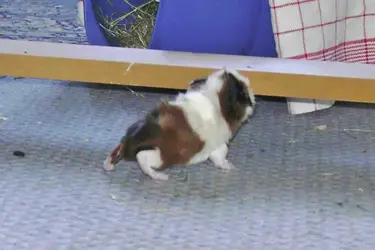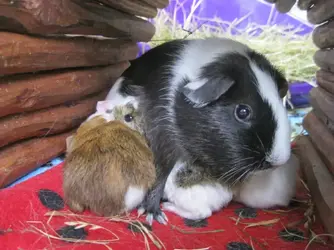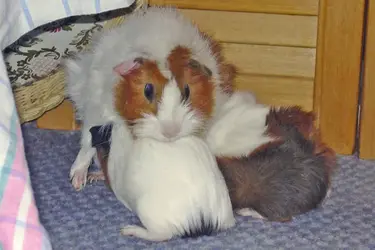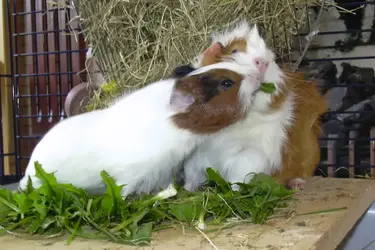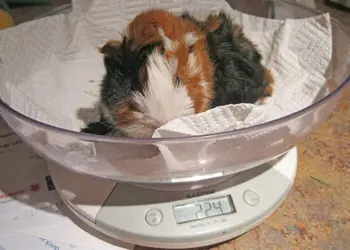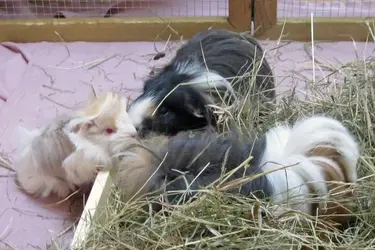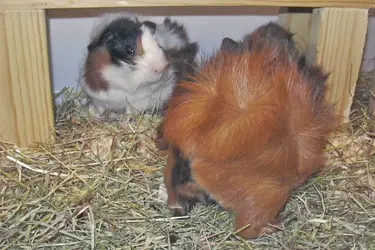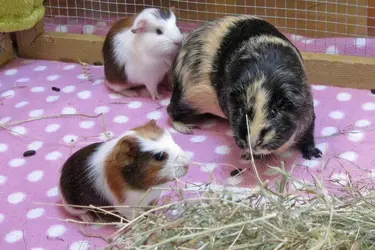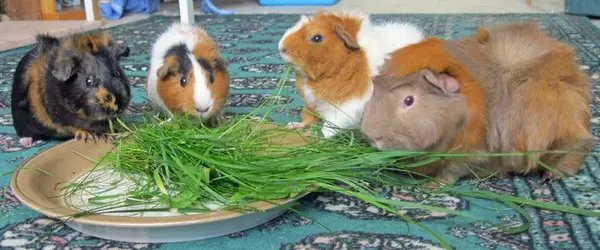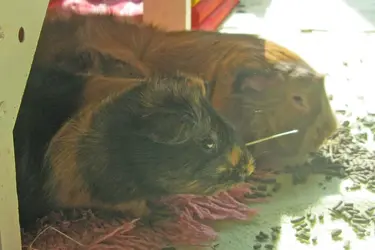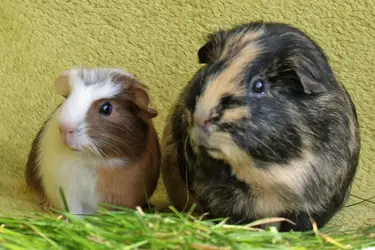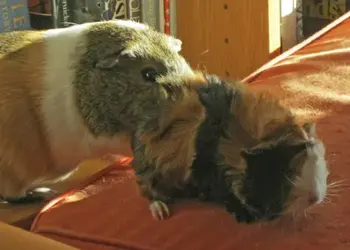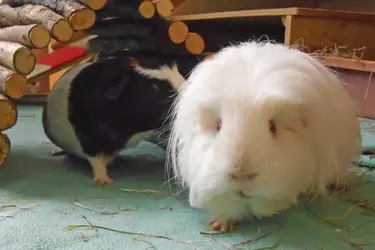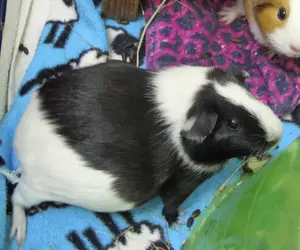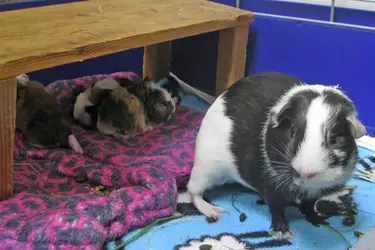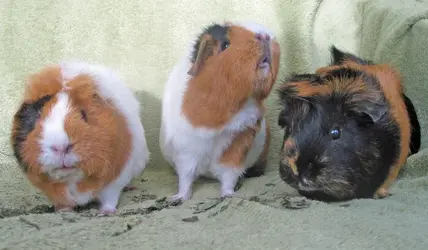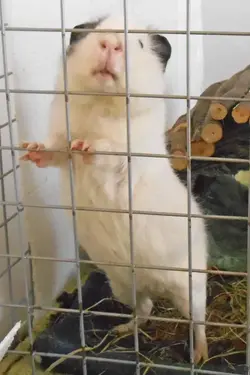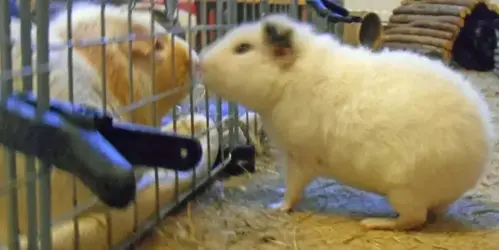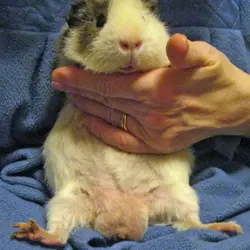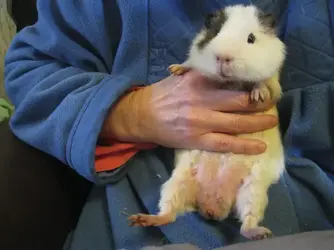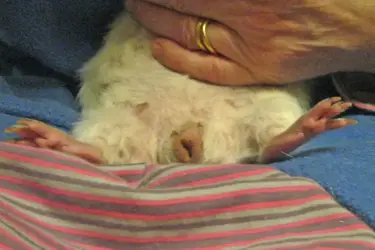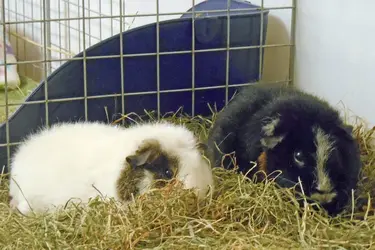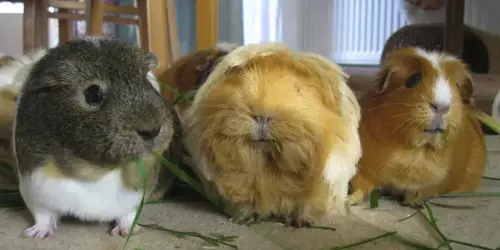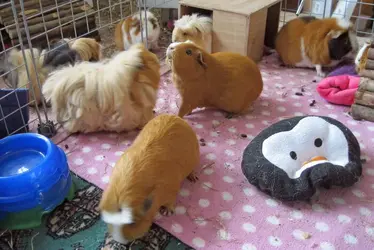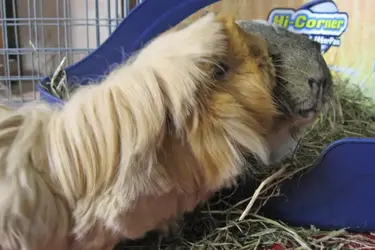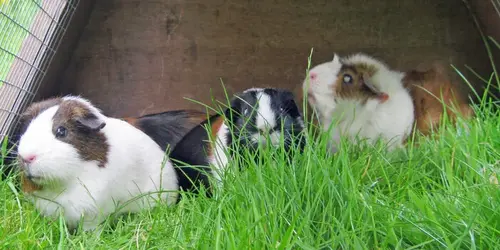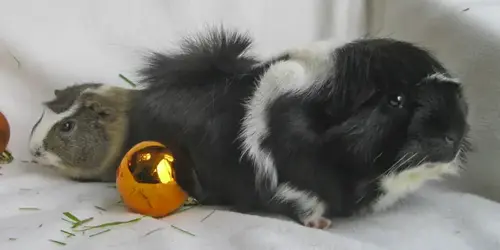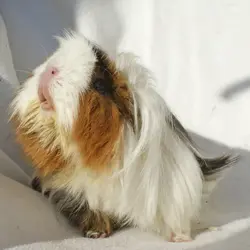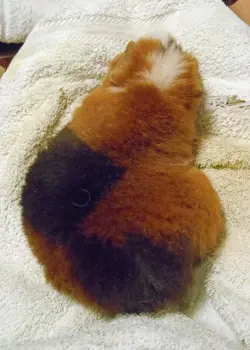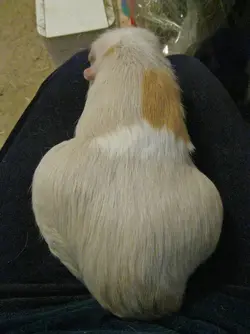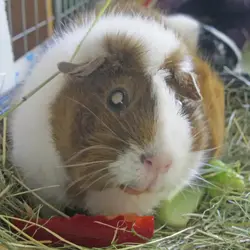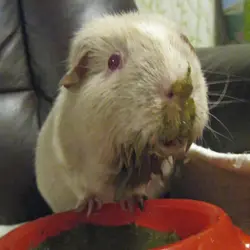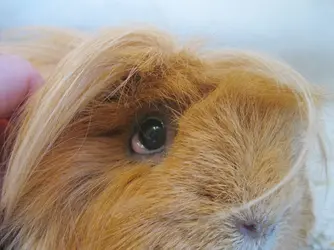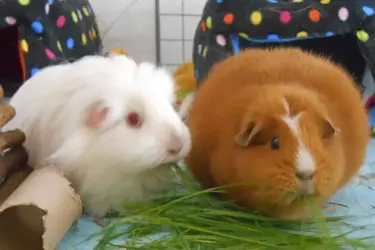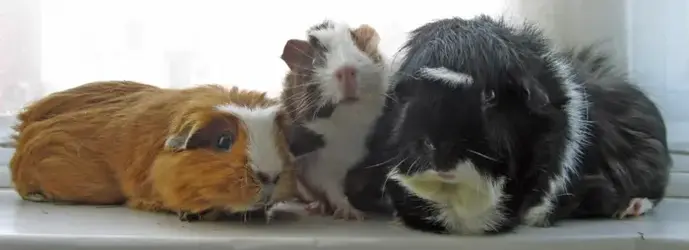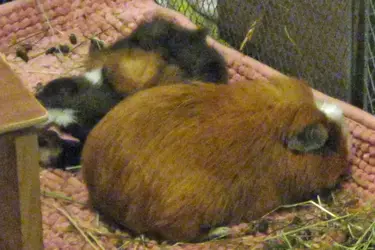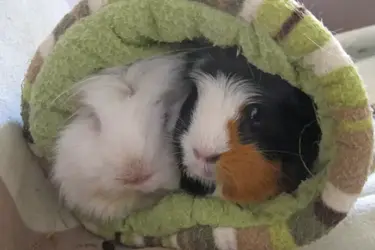1 First Hours (Birth and newly born)
2 Baby Days (Nursing and weaning)
3 School Weeks (The overlooked formative learning period)
4 Teenage Months (Those pesky hormones...)
5 Adult Years (Looking at some frequent challenges)
6 Old Age (Caring for the elderlies)
7 Facing the End (How to make the most of any precious time left)
This article series has been written for Guinea Pig Magazine and has been published in issues #54-60 (Jan. 2020 - Jan. 2021) under the title 'Days of their Lives'. The article series is property of Guinea Pig Magazine and is being run as an information guide on this forum with the magazine's permission.
Individual issues of special interest and with their other high quality content can still be back-ordered internationally in print or download format from the Magazine website: Home - Guinea Pig Magazine
This year I am exploring the different stages of a guinea pigs life. Since guinea pigs have a shorter life span than humans, all of us generally see our beloved fur balls develop and change as they go through life. Each age has its very own joys and challenges.
1 Newly Born – The First Hours
Birth
Watching little new-born pups is admittedly totally engrossing. Guinea pig babies are ‘precocious’, i.e. fully developed at birth. They are indeed born fully furred, with their eyes open and their teeth out and growing. New-born pups will start nibbling on hay within hours of being born and can move around, explore their surroundings and even popcorn (if not yet fully coordinated) just a few hours after being born.
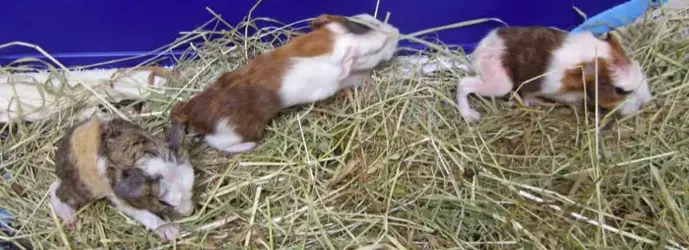
The first baby step of Blossom's three boys (the middle one, Llelo, is now living with the Tribe)
But this head-start comes at a high price: because of their roaming lifestyle to and from their feeding grounds twice daily at dawn and dusk, guinea pigs – like their larger cousins, the capybaras (who hold the record) – have the smallest litters with the longest pregnancies of all rodents. A guinea pig pregnancy takes about 9-10 weeks on average.
The liveliest of the boys making his first baby popcorns while Blossom is still not yet in milk and not encouraging him to suckle
Guinea pig pups are a multiple the size of human babies to give birth to compared with their mothers' size. An average-sized pup can weigh as much as a quarter of their small pre-teenage mother when they are born because even the youngest of sows will give birth to normal babies. That is one of the reasons why baby mis-sexing in breeders and pet shops can be such a problem.
It is therefore not surprising that a rather high percentage of births end with dead babies and/or the death of the mother, even with the best of care. The price for all that baby cuteness is all too often paid in lives.
Births happen more often in the quiet hours of the night or the early morning, rather than when you are actually around to watch, so it is not something you can bank on being around. Mothers and babies are so quiet that you can be in the same room and not notice because birth is the time mothers and babies are at their most vulnerable to predation, so the birth process is designed not to draw any attention.
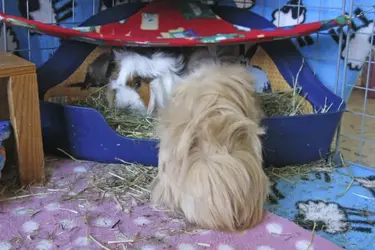
Buff-coloured Tesni the day before giving birth to a single surprise baby
Larger litters can sometimes arrive in such quick succession that a mother hasn’t got enough time to entirely free one baby from its sac before the next one comes and she has to turn around to attend the new one. Apart from stuck babies and premature litters, this is one of the most common sources of loss. Occasionally a pup will start breathing during birth (especially if the process is lasting a little longer). Aspirating the amniotic fluid in the sac is unfortunately in most cases fatal and can lead to a pup dying shortly after birth.

Freshly born and still wet
The first hour or two are spent cleaning up the still damp babies as well as dealing with the afterbirths by eating the majority of them. This triggers the contraction of the womb and kick-starts the milk flow.
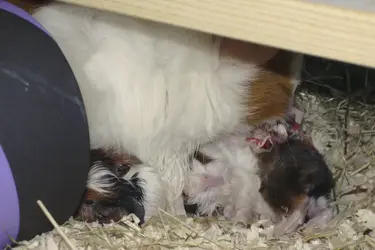
Eating the afterbirth on top of one of the babies (newborns often have a pinkish coat until has all been licked off)
It is always a marvel how all those huge babies fitted into a mother’s belly once they are out!
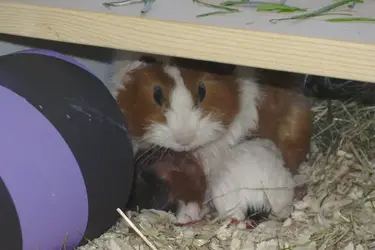
The first drink
Birth weights can vary enormously from a very dodgy 30-40g (which will require extra round the clock experienced support care to have a chance) to potentially lethal whoppers of 120-140g, which are at high risk of getting stuck during birth, or of breaking or permanently damaging their mother’s pelvis. The ideal birth weight is around 70-100g for new-borns for a smooth birth and a good start in life.
The First Day
A lot has to happen in the first day or two of a baby’s life. Its lungs have to work straight away to draw the first breaths but just like in premature human babies, the lungs are not always fully developed in premature pups, and there is no neonatal clinical care available.
Since nutrients are also no longer arriving via the blood flow, the whole digestive system has to start up once the babies are born. That is why you see guinea pig mothers lick their babies’ bums religiously in the first few days in order to stimulate gut movement.
It can take a few hours or even a day for a mother’s milk flow to kick in. A mother won’t let her babies suckle until she is actually in milk. Babies are generally provided with a little extra to help them bridge this gap.
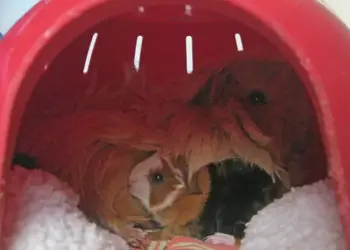
Tesni is nursing her daughter Tegan, the little baby in my avatar picture
First-time mothers, especially after a somewhat traumatic birth, may struggle with accepting their babies and looking after them; it may take some hours in close confinement until the maternal instincts come to the fore.
Occasionally a baby may be rejected. Often, but not always, a mother can perceive that there is something very wrong with a pup and that it won’t live to grow up. Some can be brought up as orphans if there is no serious issue.
The first milk is called colostrum. It is essential because it is laden with antibodies and serves as a multi-purpose job to start up the immune system (which takes several weeks to develop fully) and to give the pups some instant protection and a much-increased chance of survival.
It is worth mentioning in this context that guinea pigs become lactose intolerant once they are weaned and that cows’ milk is too rich for them and should be avoided if at all possible; this especially goes for support-feeding babies!
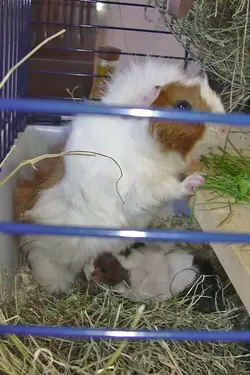
The 'milk bar' in service while the ravenous mother is stuffing herself
There are only two teats, so there is quite a bit of competition for access since first-time mothers can have up to 6 babies; usual is one to four pups. In later pregnancies, the litter size can be even larger – up to ten pups in over-bred sows, although all too often very few or no babies in these huge litters will survive.
It always such a relief to see all babies drinking and their mother busy licking them!
While the belly button fades away in adults, it is usually visible and raised in younger guinea pigs.

Clearly visible belly button where the umbilical cord has broken off
Mother comes into season again within hours of giving birth. This is why removing any full boars immediately is an absolutely must and why even neutered boars can start chasing the poor mother right over the top of the hapless new-born pups.
As soon as her season is safely over, a neutered boar can be reintroduced again but the first meeting should be away from the babies on neutral ground as mothers can also be very protective and may not want them underfoot. Some ‘husboars’ make wonderful nursery nurses; it depends very much on the personality.
It is an urban myth that boars will kill babies. Any harm done is usually from very distraught mothers desperately trying to revive dead babies that have not survived birth or died soon after.
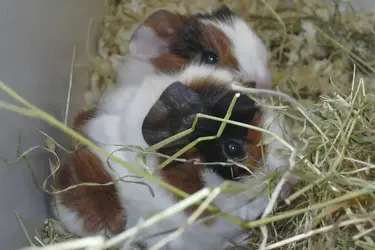
Minx's babies snuggled up and nibbling on hay just a few hours after birth
For more practical in-depth forum information on Pregnancy, Birth and Mother&Baby Care which covers the whole period step-by-step with extra information guides where needed, please click on the link below. In order to access our information, you will have to register and accept our strict no intentional breeding policy on the forum. For ongoing experienced advice, please open a support thread in our specially monitored Pregnancy and Baby section, which will become visible after your registration.
2 Baby Days (Nursing and weaning)
3 School Weeks (The overlooked formative learning period)
4 Teenage Months (Those pesky hormones...)
5 Adult Years (Looking at some frequent challenges)
6 Old Age (Caring for the elderlies)
7 Facing the End (How to make the most of any precious time left)
This article series has been written for Guinea Pig Magazine and has been published in issues #54-60 (Jan. 2020 - Jan. 2021) under the title 'Days of their Lives'. The article series is property of Guinea Pig Magazine and is being run as an information guide on this forum with the magazine's permission.
Individual issues of special interest and with their other high quality content can still be back-ordered internationally in print or download format from the Magazine website: Home - Guinea Pig Magazine
This year I am exploring the different stages of a guinea pigs life. Since guinea pigs have a shorter life span than humans, all of us generally see our beloved fur balls develop and change as they go through life. Each age has its very own joys and challenges.
1 Newly Born – The First Hours
Birth
Watching little new-born pups is admittedly totally engrossing. Guinea pig babies are ‘precocious’, i.e. fully developed at birth. They are indeed born fully furred, with their eyes open and their teeth out and growing. New-born pups will start nibbling on hay within hours of being born and can move around, explore their surroundings and even popcorn (if not yet fully coordinated) just a few hours after being born.

The first baby step of Blossom's three boys (the middle one, Llelo, is now living with the Tribe)
But this head-start comes at a high price: because of their roaming lifestyle to and from their feeding grounds twice daily at dawn and dusk, guinea pigs – like their larger cousins, the capybaras (who hold the record) – have the smallest litters with the longest pregnancies of all rodents. A guinea pig pregnancy takes about 9-10 weeks on average.
The liveliest of the boys making his first baby popcorns while Blossom is still not yet in milk and not encouraging him to suckle
Guinea pig pups are a multiple the size of human babies to give birth to compared with their mothers' size. An average-sized pup can weigh as much as a quarter of their small pre-teenage mother when they are born because even the youngest of sows will give birth to normal babies. That is one of the reasons why baby mis-sexing in breeders and pet shops can be such a problem.
It is therefore not surprising that a rather high percentage of births end with dead babies and/or the death of the mother, even with the best of care. The price for all that baby cuteness is all too often paid in lives.
Births happen more often in the quiet hours of the night or the early morning, rather than when you are actually around to watch, so it is not something you can bank on being around. Mothers and babies are so quiet that you can be in the same room and not notice because birth is the time mothers and babies are at their most vulnerable to predation, so the birth process is designed not to draw any attention.

Buff-coloured Tesni the day before giving birth to a single surprise baby
Larger litters can sometimes arrive in such quick succession that a mother hasn’t got enough time to entirely free one baby from its sac before the next one comes and she has to turn around to attend the new one. Apart from stuck babies and premature litters, this is one of the most common sources of loss. Occasionally a pup will start breathing during birth (especially if the process is lasting a little longer). Aspirating the amniotic fluid in the sac is unfortunately in most cases fatal and can lead to a pup dying shortly after birth.

Freshly born and still wet
The first hour or two are spent cleaning up the still damp babies as well as dealing with the afterbirths by eating the majority of them. This triggers the contraction of the womb and kick-starts the milk flow.

Eating the afterbirth on top of one of the babies (newborns often have a pinkish coat until has all been licked off)
It is always a marvel how all those huge babies fitted into a mother’s belly once they are out!

The first drink
Birth weights can vary enormously from a very dodgy 30-40g (which will require extra round the clock experienced support care to have a chance) to potentially lethal whoppers of 120-140g, which are at high risk of getting stuck during birth, or of breaking or permanently damaging their mother’s pelvis. The ideal birth weight is around 70-100g for new-borns for a smooth birth and a good start in life.
The First Day
A lot has to happen in the first day or two of a baby’s life. Its lungs have to work straight away to draw the first breaths but just like in premature human babies, the lungs are not always fully developed in premature pups, and there is no neonatal clinical care available.
Since nutrients are also no longer arriving via the blood flow, the whole digestive system has to start up once the babies are born. That is why you see guinea pig mothers lick their babies’ bums religiously in the first few days in order to stimulate gut movement.
It can take a few hours or even a day for a mother’s milk flow to kick in. A mother won’t let her babies suckle until she is actually in milk. Babies are generally provided with a little extra to help them bridge this gap.

Tesni is nursing her daughter Tegan, the little baby in my avatar picture
First-time mothers, especially after a somewhat traumatic birth, may struggle with accepting their babies and looking after them; it may take some hours in close confinement until the maternal instincts come to the fore.
Occasionally a baby may be rejected. Often, but not always, a mother can perceive that there is something very wrong with a pup and that it won’t live to grow up. Some can be brought up as orphans if there is no serious issue.
The first milk is called colostrum. It is essential because it is laden with antibodies and serves as a multi-purpose job to start up the immune system (which takes several weeks to develop fully) and to give the pups some instant protection and a much-increased chance of survival.
It is worth mentioning in this context that guinea pigs become lactose intolerant once they are weaned and that cows’ milk is too rich for them and should be avoided if at all possible; this especially goes for support-feeding babies!

The 'milk bar' in service while the ravenous mother is stuffing herself
There are only two teats, so there is quite a bit of competition for access since first-time mothers can have up to 6 babies; usual is one to four pups. In later pregnancies, the litter size can be even larger – up to ten pups in over-bred sows, although all too often very few or no babies in these huge litters will survive.
It always such a relief to see all babies drinking and their mother busy licking them!
While the belly button fades away in adults, it is usually visible and raised in younger guinea pigs.

Clearly visible belly button where the umbilical cord has broken off
Mother comes into season again within hours of giving birth. This is why removing any full boars immediately is an absolutely must and why even neutered boars can start chasing the poor mother right over the top of the hapless new-born pups.
As soon as her season is safely over, a neutered boar can be reintroduced again but the first meeting should be away from the babies on neutral ground as mothers can also be very protective and may not want them underfoot. Some ‘husboars’ make wonderful nursery nurses; it depends very much on the personality.
It is an urban myth that boars will kill babies. Any harm done is usually from very distraught mothers desperately trying to revive dead babies that have not survived birth or died soon after.

Minx's babies snuggled up and nibbling on hay just a few hours after birth
For more practical in-depth forum information on Pregnancy, Birth and Mother&Baby Care which covers the whole period step-by-step with extra information guides where needed, please click on the link below. In order to access our information, you will have to register and accept our strict no intentional breeding policy on the forum. For ongoing experienced advice, please open a support thread in our specially monitored Pregnancy and Baby section, which will become visible after your registration.
Please note that you have to register with the forum and accept our no intentional breeding rules in order to access our Pregnancy and Baby Care section and the following guides.
Any advice and support on this forum will only be given with the express aim to prevent any further pregnancies.
Anybody found in deliberate breach with our very explicit no breeding rules will be summarily banned.
Terms of Service And Forum Rules
Our no breeding and no breed showing forum policy explained
1 Detailed diet information for pregnant and nursing sows...
Any advice and support on this forum will only be given with the express aim to prevent any further pregnancies.
Anybody found in deliberate breach with our very explicit no breeding rules will be summarily banned.
Terms of Service And Forum Rules
Our no breeding and no breed showing forum policy explained
1 Detailed diet information for pregnant and nursing sows...
- sport_billy
- Replies: 0
- Forum: Sexing, Pregnancy & Baby Care (forum members only)

